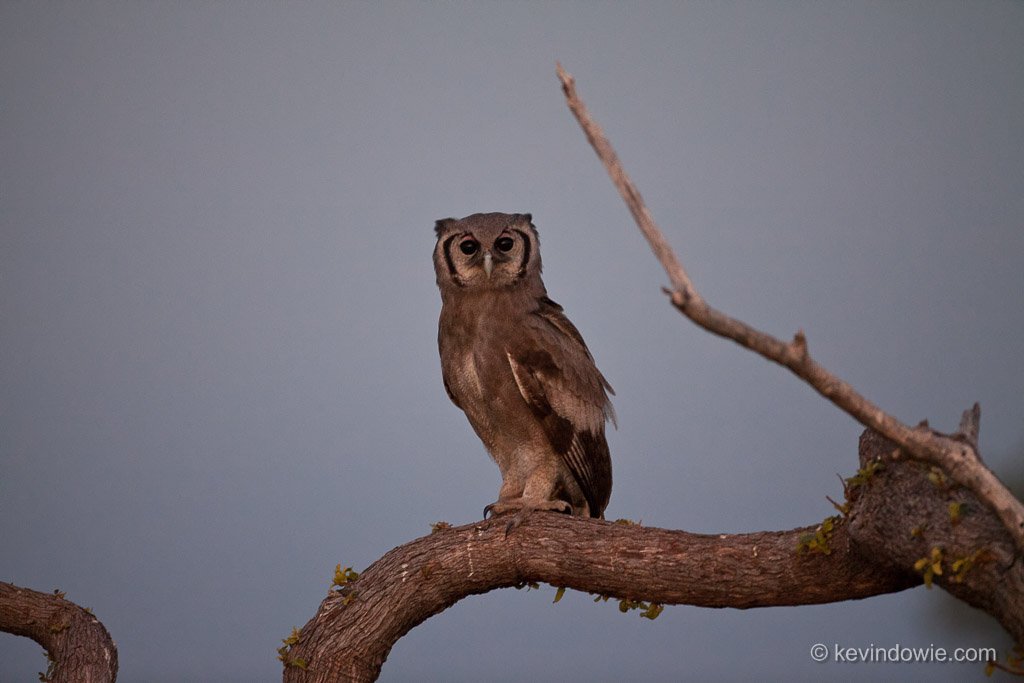Another shot from the Botswana files, I believe this is Verreaux’s Eagle Owl – Bubo Lacteus, also known as the Giant Eagle Owl.
Early morning we were out in four-wheel-drive vehicles in the Okavango Delta when we sighted a pair of these owls perched in a tree. It was early morning, in fact about 20 to 30 minutes before sunrise, so really low light levels. It’s a testament to digital technology that we were able to get useful photographs of these birds at all.
Low light photography
Check the tech details on this shot, 500mm telephoto lens at 1/25 second, and ISO 5000. Several points arise from this. Firstly the slow shutter speed was only possible because the camera and lens were well supported on a tripod (in the vehicle) and because the owl was sitting still. Image stabilization on the lens helped, as did careful camera handling.
The second point is the high ISO used, well beyond what was possible with film. At this high ISO, the image becomes a bit noisy but the detail is still excellent. Noise of course exists throughout the image but is most noticeable in the open sky. Whilst there is noise present in the branch and also the bird, it is not as objectionable or noticeable because of the texture of the bark and the feathers. In processing, I used the Noise Ninja Photoshop plug-in to smooth out, or reduce, the noise and masked the effect so that the detail in the bird and branches was preserved.
Just to drive home the point about pre-dawn light levels and detail in the image, the owl is facing east, the catchlights in its eyes are the reflection of the eastern horizon with the pre-sunrise glow in the sky.

Giant Eagle Owls
Verreaux’s eagle-owl (Bubo lacteus) or giant eagle owl, the fourth heaviest owl species in the world, is both the largest owl found in Africa and the world’s largest owl to occur in the tropics. There are no known subspecies and there is remarkably little variation in their appearance across their considerable distribution.
Habitat
The species is found through most of sub-Saharan Africa, inhabiting mainly savanna with scattered trees and thorny vegetation, but also more arid areas such as semi-desert, and riverine forests.
Diet
The species is considered an avian apex predator, meaning it is at or near the top of the food chain and healthy adults normally have no natural predators. A highly opportunistic hunter, its diet is seemingly random and highly variable, it will take virtually any species it’s large enough to handle. Mammals as large as monkeys and wild cats, to smaller species such as meerkats and rats. Birds as large as herons and egrets, to ducks, swamphens, coots, guineafowl. It will take reptiles and frogs and even insects, sometimes on the wing.
Conservation status:
The threats faced by this species include the residual effects of pesticides, it is occasionally killed by flying into novel man-made objects, including wires and massive dams along reservoirs. Habitat destruction, as they require ample trees with large bird nests in order to take residence in a given area.
Although their status varies from one locality to another, at the species level, they are widespread and to date are not currently considered to be threatened with extinction.
